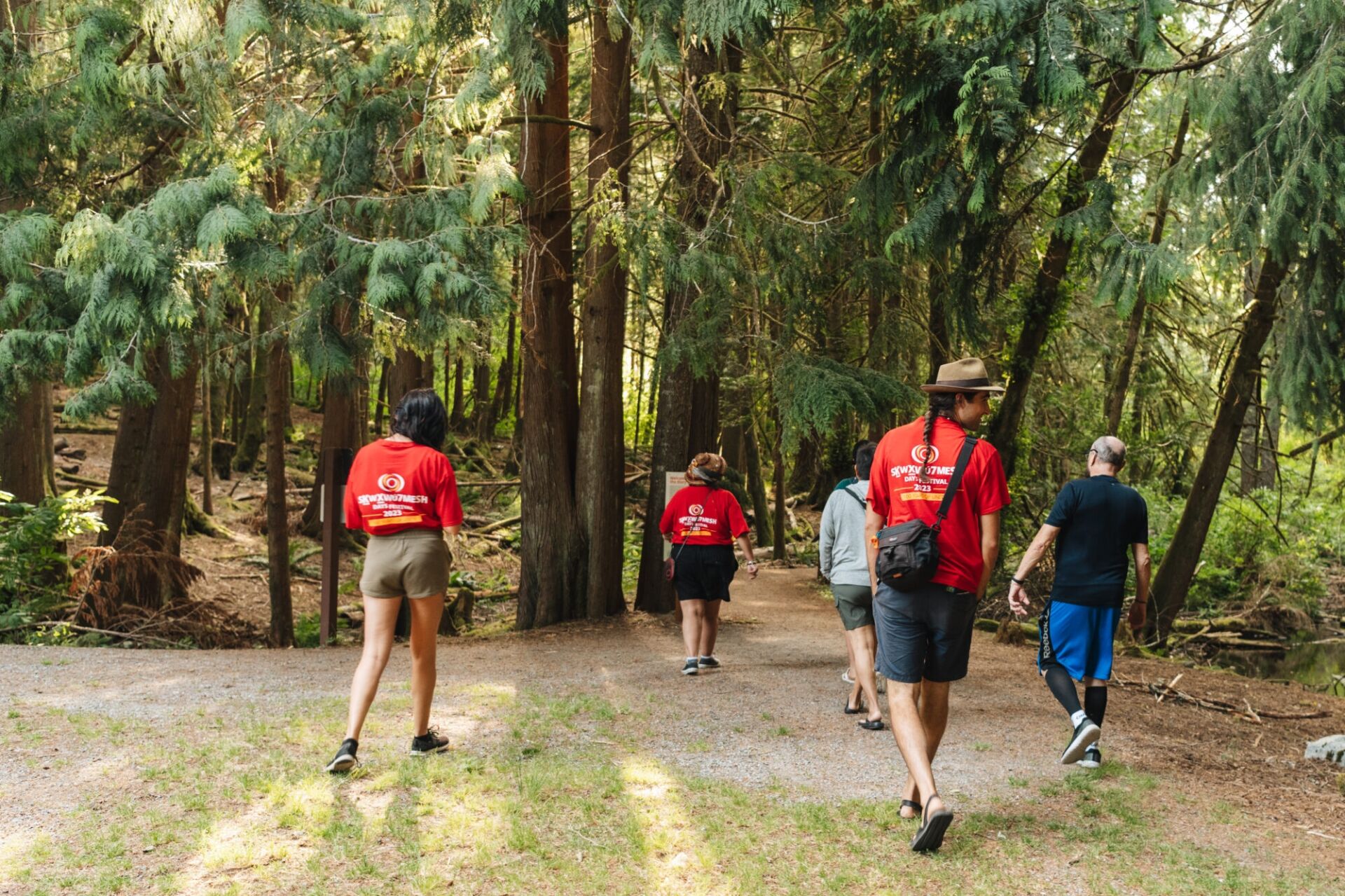
Our Land
Sḵwx̱wú7mesh traditional territory is 6,732 square kilometers (673,200 hectares), encompassing 23 villages totaling 28.28 square kilometers (2,828 hectares). These land parcels are scattered from Vancouver to Gibsons Landing and the area north of Howe Sound.
Our traditional territory, located in the Lower Mainland region of British Columbia, stretches from Point Grey in the south to Roberts Creek in the west. It extends north along the height of the land to the Elaho River headwaters, covering all of the islands in Howe Sound, the entire Squamish Valley, and Howe Sound drainages. The territory continues southeast to the confluence of the Soo and Green Rivers north from Whistler, then south along the height of the land to the Port Moody area, including the entire Mamquam River and Indian Arm drainages. It finally extends west along the height of the land to Point Grey.
This vast territory includes parts of present-day cities such as Vancouver, Burnaby, and New Westminster, as well as all of North Vancouver, West Vancouver, Port Moody, the District of Squamish, and the Municipality of Whistler. The boundaries encompass all of Howe Sound, Burrard Inlet, and English Bay, as well as the rivers and creeks flowing into these bodies of water. Furthermore, it includes the various islands within Howe Sound.
Throughout this expansive territory, numerous Sḵwx̱wú7mesh place names exist, each carrying unique meanings and significance rooted in our oral traditions. These names help explain the place and our relationship with the land. The land also bears witness to the rich history of our ancestors, with evidence of settlements, resource sites, and spiritual locations, including villages, hunting camps, cedar bark gathering areas, rock quarries, clam processing camps, pictographs, and cemeteries. Some of these village sites date back 3,000 years.
X̱ay Temíxw
In 2000, the time was right to develop a Sacred Land Use Plan that was community-driven, capturing and entrenching the cultural and natural values such as inherent rights to exercise the use of our land and waters, and all the resources within the territory occupied and used by our ancestors. The first version of the draft X̱ay Temíxw summarizes what was heard at community feasts, in individual interviews and in workshops with Elders and youth.
Learn more